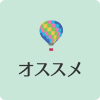本文
The Himeji Prisoner of War Camp
Treatment of the prisoners
Prisoners of war who had been sent by train from Ujina arrived at Himeji on November 20, 1914. The Semba-Hontokuji Temple, Keifukuji Temple and Myogyoji Temple were used for the Himeji Prisoner of War Camp. At that time, about 150 German soldiers and about 150 Austro-Hungarian soldiers were interned at the Hontokuji Temple and Keifukuji Temple, respectively. About 10 officers and others were interned at the Myogyoji Temple. A total of more than 300 prisoners spent ten months at Himeji until September 1915. The Hontokuji Temple and Keifukuji Temple also interned Russian prisoners captured during the Russo-Japanese War.
The prisoners, who gradually got used to living at the camp, had a great deal of free time and some of them used that time to study the Japanese language. In December, the prisoners were given permission to go on an excursion and they even climbed the tower of Himeji Castle. The prisoners were frequently allowed to go on outings during their internment. In addition, a post exchange was set up within the camp and started selling alcoholic beverages and other items. The cash to buy these products was covered mainly by donations from German companies and foreigners living in Japan.

Photo: The Himeji Prisoner of War Camp (courtesy of Mr. Dieter Linke)
The Semba-Hontokuji Temple, which was used as a prisoner of war camp, still retains a monument (fountain) with the motif of an old castle on the riverside of the Rhine. This monument is believed to have been created by Walter Newiger, an interned soldier.

Photo: A monument (fountain) created by a prisoner (courtesy of the Himeji City Historical Materials Compilation Room)

Photo: Walter Newiger, who is believed to have created the monument (courtesy of Mr. Dieter Linke)









